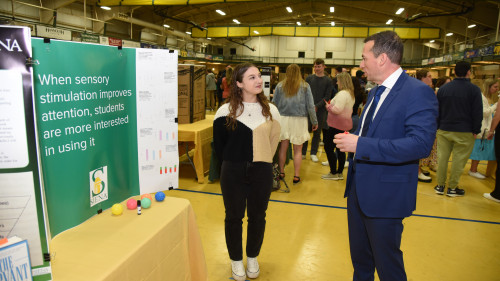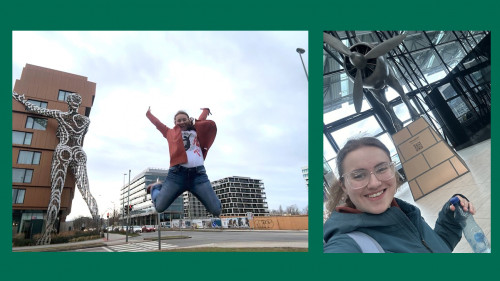

We need fast, accurate sensors to tell us precisely what chemicals are present in our environment and two Siena College professors are in the process of designing a product that will accomplish that goal.
Jodi O’Donnell, Ph.D., associate professor of chemistry and biochemistry, and Lucas Tucker, Ph.D. assistant professor of chemistry and biochemistry, have received a Multi-Investigator Cottrell College Science Award from one of America’s oldest foundations, the Research Corporation for Science Advancement (RCSA). The Siena College chemists are taking a novel approach to designing and making sensors that change color in the presence of certain chemicals known as chromophoric liquid crystalline chemical sensors.
“Dr. O’Donnell and I were able to design a fascinating project at the cusp of my work with liquid crystalline materials and her experience with sensors that will provide a springboard for our future research directions and, ultimately, our students’ careers,” Tucker said.
The chemists and their undergraduate students at Siena College will be trying to create useful sensors that reveal the presence of various types of volatile organic compounds (VOCs). According to the Environmental Protection Agency, VOCs are emitted by a wide variety of products such as paints and lacquers, paint strippers, cleaning supplies, pesticides, building materials, furnishings and many other items. VOCs have low boiling points, which means their molecules readily evaporate from liquid or solid and enter the surrounding air.
The researchers will be attempting to create VOC sensors by using a class of compounds called porphyrins, which are commonly found in the body. For example, heme, the active site of hemoglobin - a protein in red blood cells that carries oxygen - is a porphyrin.
O’Donnell and Tucker will be working with what are called cholesteric liquid crystalline porphyrins. As early as the 1880s, researchers noticed that cholesteric substances changed colors as they cooled or were exposed to external stimuli. The color changes occur because temperature affects the crystal-like nature of the molecules, altering the way they bend light rays in a process called polarization.
“This grant will support summer research efforts by our undergraduate students. Under our guidance, they will perform the laboratory syntheses and characterization, and will be responsible for device fabrication and sensor testing,” O’Donnell said.
O’Donnell and Tucker received their $75,000 RCSA award under the foundation’s Multiple Investigator Cottrell College Science program. The MI-CCSA program is designed to start sustainable, collaborative programs of research by cross-disciplinary teams of faculty from science departments in primarily undergraduate institutions. In addition to funding research that builds teams of students and faculty, the Multi-Investigator promotes basic research as a vital component of undergraduate education at the nation’s public and private small colleges and universities.
“We hope these awards will help early career faculty establish long-term, sustainable and productive cross-disciplinary research programs,” said RCSA Interim President Jack Pladziewicz. “We also hope that by encouraging student participation in these projects, many undergraduates will be encouraged to pursue careers in science and benefit by working as part of an interdisciplinary research team.”
This year, Siena College was one of four primarily undergraduate institutions to receive this award.

